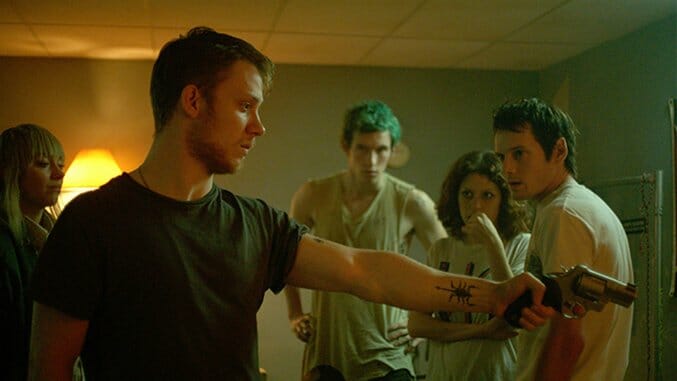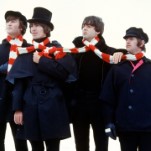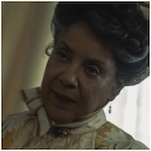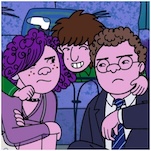Green Room

As effective as Blue Ruin was as a thriller, it was difficult to see much in Jeremy Saulnier’s debut feature beyond skillful mechanics and the standard “eye for an eye makes the whole world go blind” view of vengeance, with its ordinary main character’s incompetence at meting out violence offering (at best) a marginal sense of novelty to the proceedings. So the high-concept premise of his follow-up, Green Room, already sounds like an improvement based on its wild extravagance alone: a life-threatening encounter between a punk-rock band and a group of neo-Nazis.
Even more refreshing in Green Room is Saulnier’s lack of interest in the kind of moralizing that made Blue Ruin ultimately seem conventional. Instead, Saulnier simply presents us this nutty scenario without feeling the need to lard it up with anything as cumbersome as topical commentary or moral ambiguity. He proceeds to wring as much tension and suspense from its pulpy retro plot as possible, adding a few entertaining grace notes along the way.
Most of those grace notes can be seen in the performances. Much of Blue Ruin’s slim thematic intrigue lay in the spectacle of seeing a tentative, ultra-logical pipsqueak like Dwight Evans (Macon Blair) try to enact violent retribution with increasingly disastrous results. In the ensemble-based Green Room, Saulnier revels in the contrasts of personalities and styles: band bassist Pat’s (Anton Yelchin) Bill Paxton-like desperation, for instance, set alongside the weary, near-drugged-out deadpan of Amber (Imogen Poots), a friend of the woman whose murder sets off the film’s violent chain of events; or the imperial calm of Darcy (Patrick Stewart), the ruthless leader of the band of white supremacists who attempt to kill Pat, Amber and the rest. It’d be a stretch to call these characters three-dimensional, but nevertheless, under Saulnier’s writing and direction, they all manage to stand out just enough as individuals for us to become emotionally involved in their fates.
-

-

-

-

-

-

-

-

-

-

-

-

-

-

-

-

-

-

-

-

-

-

-

-

-

-

-

-

-

-

-

-

-

-

-

-

-

-

-

-








































